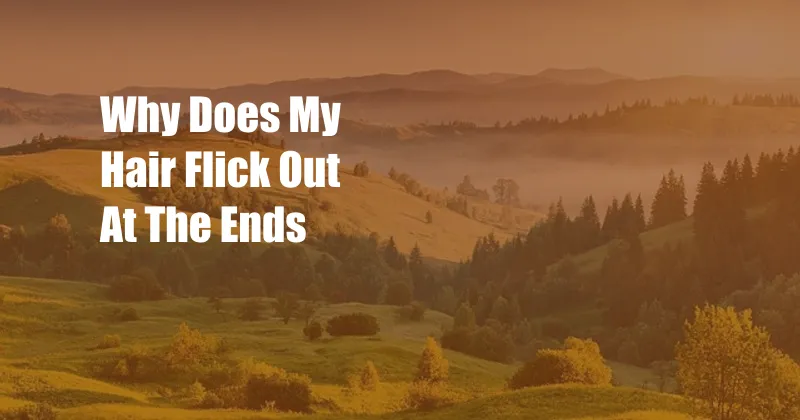
Why Does My Hair Flick Out at the Ends?
Have you noticed that your hair seems to flick out at the ends, creating an unwanted triangular shape? This common hair concern can be frustrating and may make it difficult to achieve the smooth, polished look you desire. Understanding the causes behind this issue can empower you to find effective solutions and embrace your natural hair texture.
Split Ends: The Culprit Behind Hair Flicking
Split ends, also known as trichptylosis, occur when the outermost layer of the hair shaft (the cuticle) splits or frays. This causes the damaged ends to protrude outward, giving the hair an uneven, choppy appearance. Split ends are often the result of chemical treatments, heat styling, and environmental damage, such as prolonged sun exposure or harsh wind.
Lack of Moisture: A Contributing Factor
Dry, dehydrated hair is more prone to split ends and flicking. When your hair lacks moisture, the cuticle becomes more brittle and susceptible to damage. This can be caused by infrequent or improper hair washing, exposure to heat, or using harsh hair products.
Hair Type and Texture: Natural Predispositions
Certain hair types and textures are more likely to experience hair flicking. Curly or coily hair, for example, is naturally drier than straight hair due to its tighter curl pattern, making it more prone to split ends and breakage. Fine hair is also more susceptible to damage and flicking, as it is more delicate and prone to tangles.
How to Combat Hair Flicking
Addressing hair flicking requires a combination of hair care practices and lifestyle changes. Here are some tips to help you achieve smoother, healthier hair:
-
Regular trims: Trim split ends every 6-8 weeks to remove damaged hair and prevent further breakage.
-
Gentle hair care: Avoid brushing your hair when it’s wet, as it is more fragile and prone to damage. Use a wide-tooth comb and detangling products to minimize breakage.
-
Hydrating hair care: Opt for shampoos and conditioners that are designed for your hair type and provide ample hydration. Use deep conditioning masks regularly to replenish moisture.
-
Limit heat styling: Minimize the use of heat styling tools, such as blow dryers and flat irons, which can dry out your hair and cause split ends.
-
Protect from damage: Wear a hat when exposed to prolonged sunlight or harsh wind to protect your hair from environmental damage.
FAQ: Hair Flicking Explained
Q: What causes hair to flick out at the ends?
A: The most common cause is split ends, which occur when the outermost layer of the hair shaft splits or frays. Lack of moisture, certain hair types, and environmental damage can also contribute to hair flicking.
Q: Can hair flicking be prevented?
A: While hair flicking can be an inherent characteristic of certain hair types, it can be minimized by adopting hair care practices that prevent split ends and breakage, such as regular trims, gentle hair care, and limiting heat styling.
Conclusion
Understanding the causes behind hair flicking is the first step towards addressing this common hair concern. By implementing hair care practices that focus on preventing split ends and maintaining moisture, you can achieve smoother, healthier hair. Remember, achieving your desired hair texture is a journey that requires patience and consistency. If you’re still experiencing hair flicking after implementing these tips, consult a professional hair stylist or dermatologist for personalized advice. Would you like to know more about hair care tips?